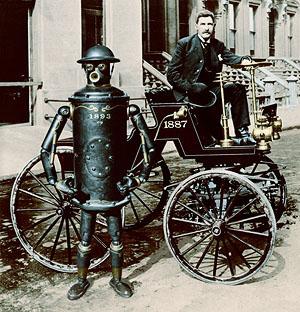2017 was a progressive year for the immersive technology space. This goes for software and hardware as well as platforms and systems all working towards augmenting human intelligence. Human computer interfaces (HCIs) are now able to emulate neural networks. This amazing technology is truly immersive and could help merge our physical and digital worlds soon.

One impressive milestone within immersive technology is the improved output and display technologies available to consumers and enterprise. Whether it’s games or serious simulations, visual display output within immersive media has become more natural: comfortable in form factor and smaller in size, higher resolution, and more affordable to produce and purchase. This is helping to bring immersive technology to areas of training and education. Those two use cases have a genuine need for this type of technology.
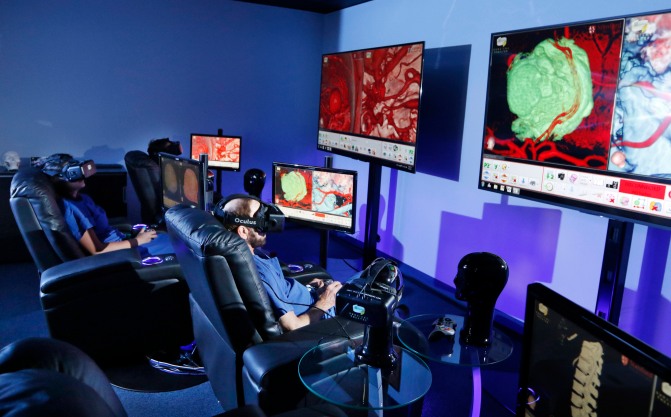
Humans have a deep rooted history of storytelling. Our need for modern immersive and interactive storytelling hasn’t become a priority need yet, but almost every consumer demographic plays interactive games these day and this has grown our desire to be digitally connected and virtually social.
‘Need’ is an important word in today’s technology landscape. Many companies reinvent a shinier ball or convince themselves that solving a future unknown problem is more valuable than solving an existing problem (which might be less interesting).

![]()
Ironically, Hollywood storytellers promote larger technology companies to invest in new immersive technology solutions. It’s cool and sexy to be in the entertainment business. Some of these major chip and platform makers have already made huge investments towards enabling more immersive technology solutions while game engines like Unity and Unreal are catering to new storytelling customers in film and TV.
Who are the bigger players investing in Immersive Input Technology?
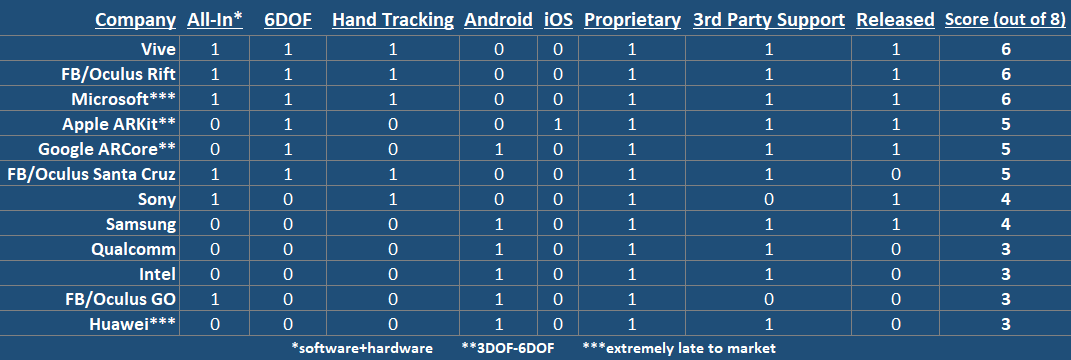
One of the remaining obstacles to world wide immersive technology adoption is achieving six degrees of freedom AKA 6DOF input. Input technologies for tracking hand gestures as well as the human body positions are the biggest problems that need to be solved for consumers and enterprise to effectively integrate immersive technology into their every day use cases.
Six Degrees of Freedom (6DOF)
“Six degrees of freedom (6DOF) refers to the specific number of axes that a rigid body is able to freely move in three-dimensional space. It defines the number of independent parameters that define the configuration of a mechanical system. Specifically, the body can move in three dimensions, on the X, Y and Z axes, as well as change orientation between those axes though rotation usually called pitch, yaw and roll.”
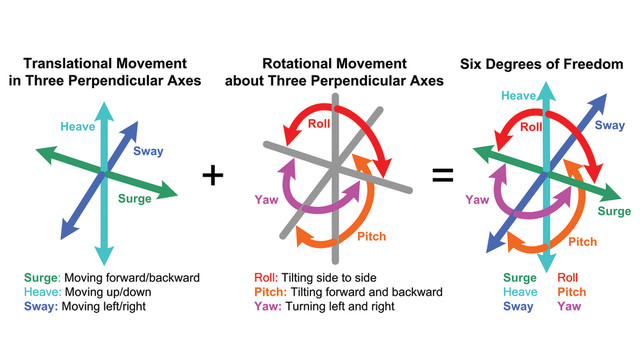 There are some initial mobile solutions for partial (3DOF) hand and position tracking as well as some established 6DOF (desktop dependent) solutions that come at a much higher processing expense, alongside a greater cost expense for professional hardware and larger installation spaces needed.
There are some initial mobile solutions for partial (3DOF) hand and position tracking as well as some established 6DOF (desktop dependent) solutions that come at a much higher processing expense, alongside a greater cost expense for professional hardware and larger installation spaces needed.
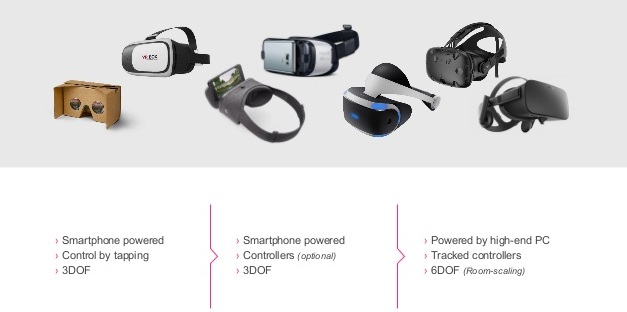 Start-ups are making great innovations in the specific area of immersive software tracking technology. SLAM has become a very popular key word in the immersive technology software space. SLAM is often simplified into one type of mapping/tracking technology when it actually covers an extremely wide spectrum of meanings and methods of uses.
Start-ups are making great innovations in the specific area of immersive software tracking technology. SLAM has become a very popular key word in the immersive technology software space. SLAM is often simplified into one type of mapping/tracking technology when it actually covers an extremely wide spectrum of meanings and methods of uses.

While larger companies have also been focused on SLAM technology, many lack the internal flexibility and patience for rapid innovation. Start-ups and specialized University research teams who are more nimble and focused on solving one technology problem have made the most progress in SLAM algorithm technology in the last 20+ years. Start-ups are still dependent on larger companies to create platforms and hardware ecosystems to generate revenue so the relationship between these two is a natural (usually invisible) partnership.
Independent SLAM technology providers
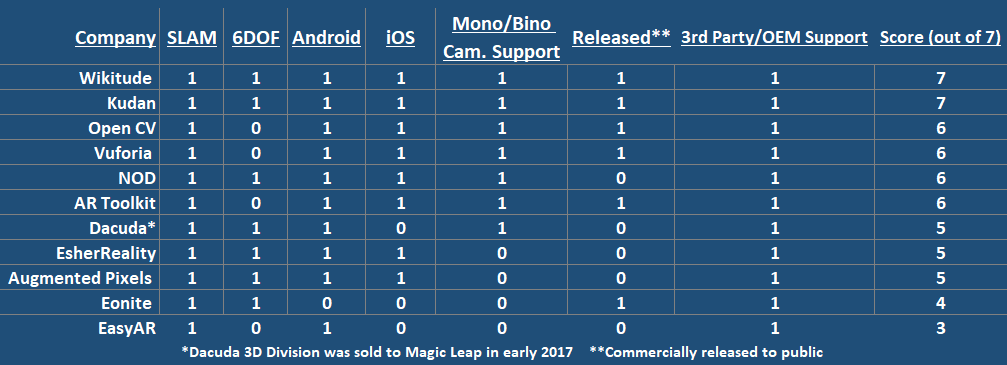
As immersive technology moves into version 2.0, we may see quite a few start-ups going out of business in 2018 for lack of product and revenue. Some smart start-ups have been lucky enough to be acquired in recent years. For those still waiting for their big pay day it might be another 5 years, if not longer, until we are more than millions of daily users. It’s not easy to be a part of a nascent industry. Staying focused on solving specific technology blockers and building self-sustaining platform ecosystems is going to help immersive technology evolve into global market places quicker.
There is another group of start-ups who’ve created ‘all-in’ proprietary immersive solutions that are a combination of hardware and software in one product. Controlling an all-inclusive system makes it easier to build on as well as fix and enhance user experiences. Very few of these systems have succeeded nor delivered meaningful content beyond a crowd funding phase. The problem that many of these start-ups face is one of identity. Are they targeting mobile, home, or office based end users? Are they building 3rd party ecosystems or focused on doing it all themselves? It takes a much larger investment to gamble on this entry point for smaller companies.
Independent all-inclusive immersive technology providers
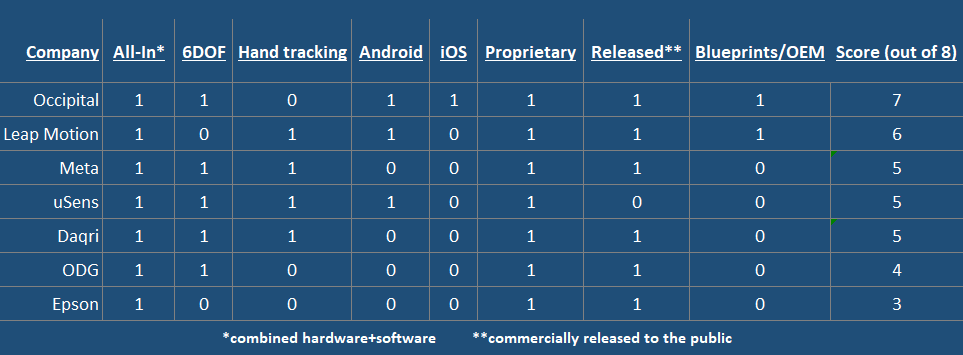
How long will it take for the world to adopt always-on immersive technology? It hasn’t happened overnight, and it may not happen for many more years. At the rate we are currently going we can probably expect huge improvements to our mobile content capabilities in our phones. This could make everyday experiences such as shopping or visiting the doctors more convenient and hassle free in a personalized virtual setting.
While mobile is always on in our pockets, enterprise and educational verticals will also continue to grow and benefit greatly from immersive technologies, providing easier access, better products and more compelling experiences for new generations.

The last few years have been an experiment for most companies and individuals in the immersive technology and ARVR space. With this type of exploration comes natural bridges as well as friction points. An important inflection point is reached when a business needs to make money to stay afloat, and this seems to be a current juncture for many start-ups trying to succeed in 2018.

Some early immersive technology adopters have become outspoken evangelists raising awareness and sharing knowledge in a positive way. But, like most new and emerging technologies, the kool-aid effect and get rich quick egos have fueled self-preservation to the detriment of more progress. If the technology industry can get past false hype and negative noise to increase collaboration and expose useful needs, we might find immersive technology in our every day lives sooner than we think.
– Mark T. Morrison
